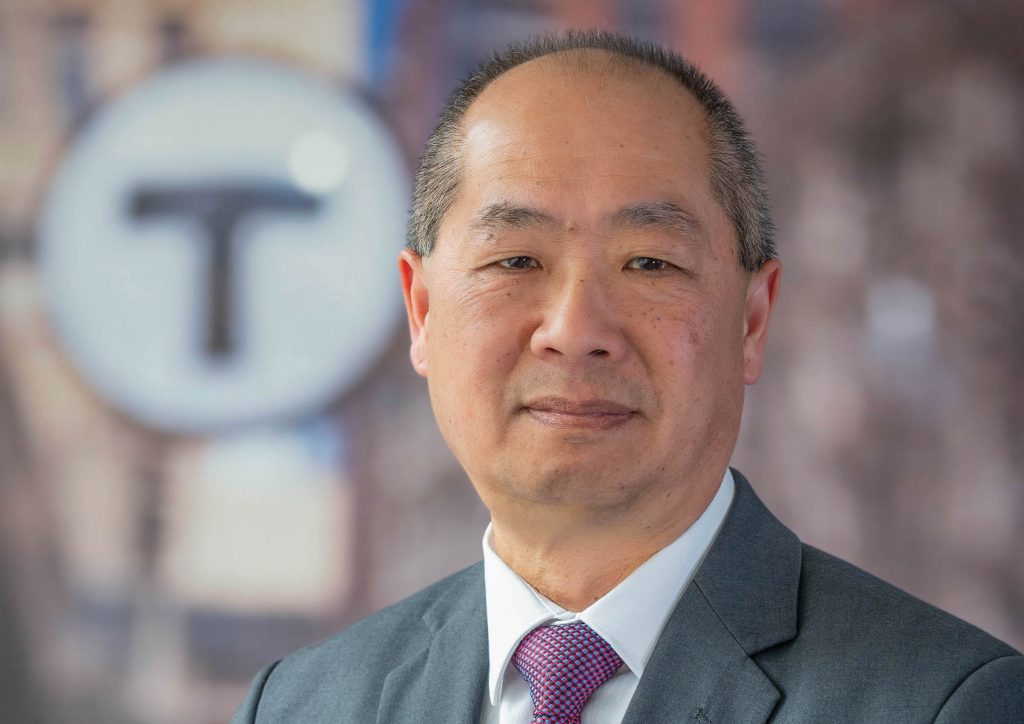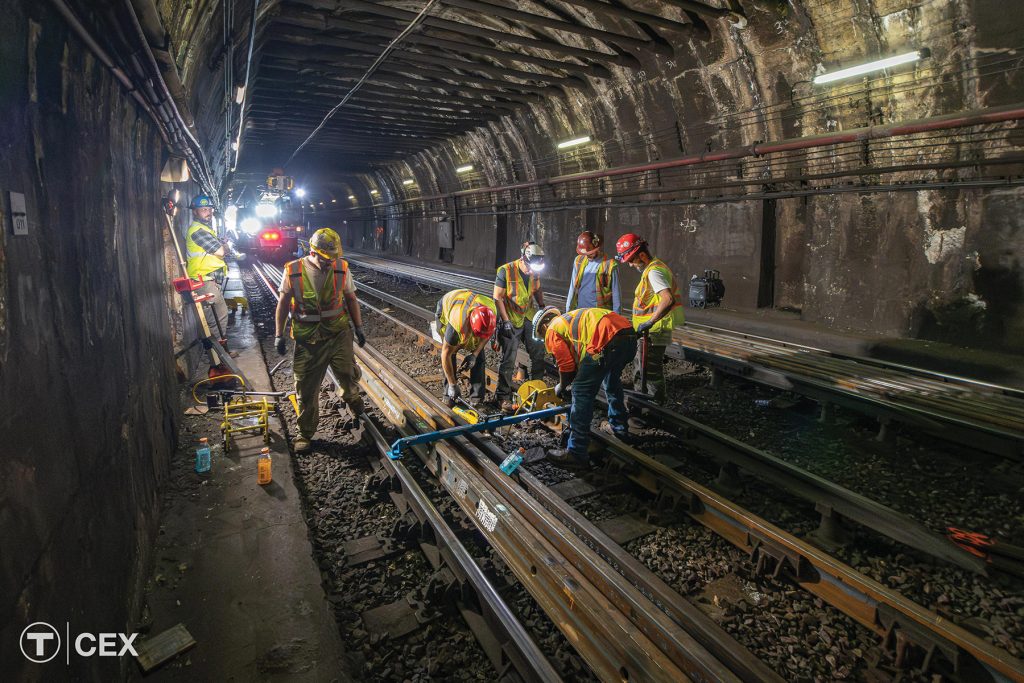APTA Member Profile: Phillip Eng
10/3/2024

General Manager and CEO
Massachusetts Bay Transportation Authority (MBTA)
Boston, MA

What is the size and scope of the MBTA?
The Massachusetts Bay Transportation Authority (MBTA)—known locally as “the T”—is one of the largest public transit systems in the country, operating an extensive network of subway, bus, commuter rail, ferry, and door-to-door paratransit services across 176 cities and towns in eastern Massachusetts and parts of Rhode Island. A system of tremendous character, it is also the first transit system in North America. With a focus on our workforce, we have increased our headcount by more than 1,300 new hires since January 2023 and stand strong with over 7,700 employees serving more than 760,000 riders every weekday across all modes.
How are you improving public transit in your community?
I’m privileged and proud to be leading the T during a period of immense transformation. We’re working to rebuild our workforce, our approach and capabilities, and our infrastructure to deliver safe, reliable, and more frequent service for the public we serve today and for future generations.
We balanced the need to ensure riders can use public transportation as we launched the Track Improvement Program in November 2023, a series of systemwide rolling outages to rebuild our infrastructure after years of deferred maintenance. Our commitment was to eliminate all slow zones—approximately 250 of them—by the end of 2024. We challenged ourselves to also perform significant state of good repair work adjacent to the restrictions, which, if left unaddressed, would themselves shortly become new speed restrictions. With each track outage, we maximized the opportunity to include signal, power, and station improvements. When this program concludes at the end of the year, we’re confident all speed restrictions will be gone, with plans to maintain the upgrades we’ve implemented. We’ll continue this momentum into the new year, upgrading other components such as signals and power.
We’re modernizing our fleets to provide a better experience for riders and reduce our carbon footprint. Our new heavy rail Red and Orange Line cars are being delivered on the new timeline established with our manufacturer. We’re designing new light rail “supercars” on the Green Line, and looking forward to receiving a mock-up in the coming months. As we’re upgrading our bus garages to replace our dirtiest diesel buses with clean battery-electric vehicles, we have not lost sight of the need to maintain the existing fleet. And we’re excited about our decision to utilize battery-electric train technology, recently approving a plan to bring zero-emission trains to our Fairmount Commuter Rail Line, which will result in faster, quieter service that improves air quality in this environmental justice corridor.
We’re also reimagining service through initiatives like our Bus Network Redesign, which aims to better reflect the changing travel needs of the region. The first phase of these changes is set to launch this December. We’ve also just launched a reduced-fares program that provides income-eligible riders with half-priced fares on all modes.
These transformations and many others are aimed at providing a modern, safe, dependable, and accessible service that riders expect and deserve. We believe better transit is essential, and we will continue to build a better and more equitable service for today’s riders and the riders of tomorrow.
Please describe your career in the public transportation industry.
I take great pride in my career as a public servant. Working in public transportation means having a direct, positive impact on the lives of your neighbors and community. I’m a daily T rider, and, as I ride the system and hear directly from riders, it gives me great pride to hear they notice the improvements we’re working so hard to implement—they’re beginning to believe that change is happening.

My career in public service began as a junior engineer in the early ’80s at New York State DOT (NYSDOT) where I had the opportunity to inspect and work on some iconic bridges, including New York City’s four East River Bridges: the Brooklyn, Manhattan, Williamsburg, and Queensboro Bridges. My journey took me to nearly every functional unit within NYSDOT, including planning, design, structures, construction, maintenance, and operations. I finished in a statewide role as executive deputy commissioner and chief engineer, and I’m particularly proud of the role I played in delivering the Rochester Train Station project.
Joining the Metropolitan Transportation Authority (MTA) in 2017 as chief operating officer, I focused on bringing innovation to the agency, including contactless fare payments, updating the NYC transit signal system, and streamlining capital delivery across all operating agencies. As acting president for New York City Transit, I led the early efforts of the Subway Action Plan to accelerate work, improve access, and address the challenges facing the New York City subway. During my tenure as president of the MTA Long Island Rail Road (LIRR), we initiated the strategic Forward program to improve reliability and enhance the rider experience, and, in four years, delivered the best on-time performance in LIRR history, which proudly continues today.
I’ve been blessed throughout my career to have been surrounded by outstanding public servants, and have had the privilege to lead or participate in many exciting and rewarding efforts, such as construction of the new Kosciuszko Bridge, the Mario M. Cuomo Bridge, the LIRR Mainline Expansion Third Track, Moynihan Train Hall, Louise M. Slaughter Station, and Jacob K. Javits Convention Center Expansion.
These are all experiences that help inform my role as GM of the MBTA. We know that public transportation isn’t about just moving trains, buses, and ferries, it’s about moving people; our family, friends, neighbors, and our community. We’re laser-focused on delivering the trip that they deserve so that the MBTA is the travel option of choice.
I’d like to underscore that these improvements are a team effort. I’m also thankful to our federal partners, the Healey-Driscoll Administration, and our State Legislature for their leadership and collaboration. Together, we’ve upgraded thousands of miles of track and increased service frequency. In some cases, like on the Blue Line, we have more trips operating today than we had before the pandemic. Through our historic labor agreements with all 28 of our unions, dropped trips are down and the T is again a workplace competitive with private industry. We’re improving the accessibility of our stations with upgrades, and equity through creative fare policies.
Some thought this was an insurmountable challenge, but I’m proud of our team and the progress we’ve made and thank our employees for their dedication. The improvements to our system and culture wouldn’t be possible without contributions from every employee in every department. I’m blessed to stand alongside each member of our workforce as we deliver on our commitments and provide safe, reliable service. I’m confident that the best is yet to come!